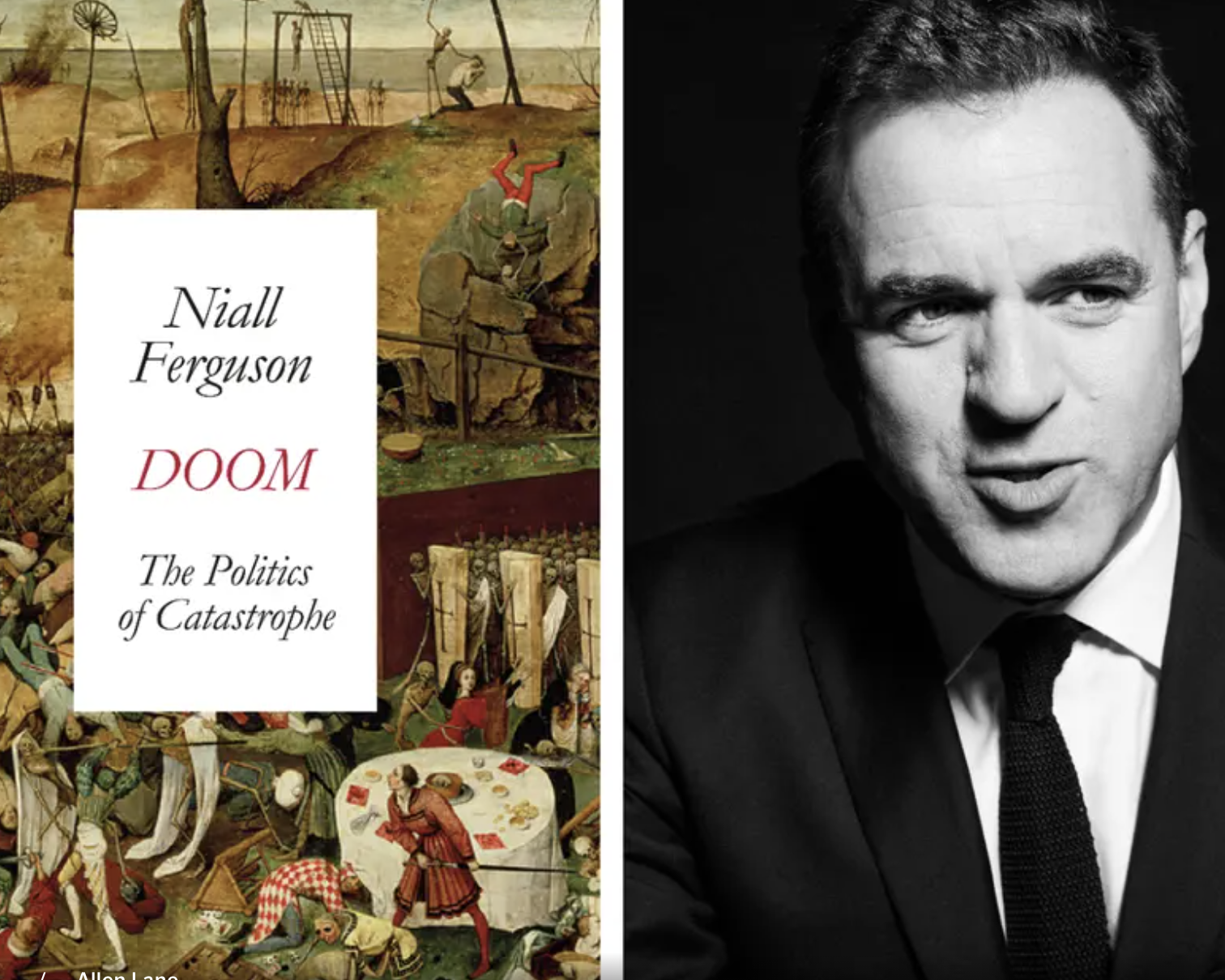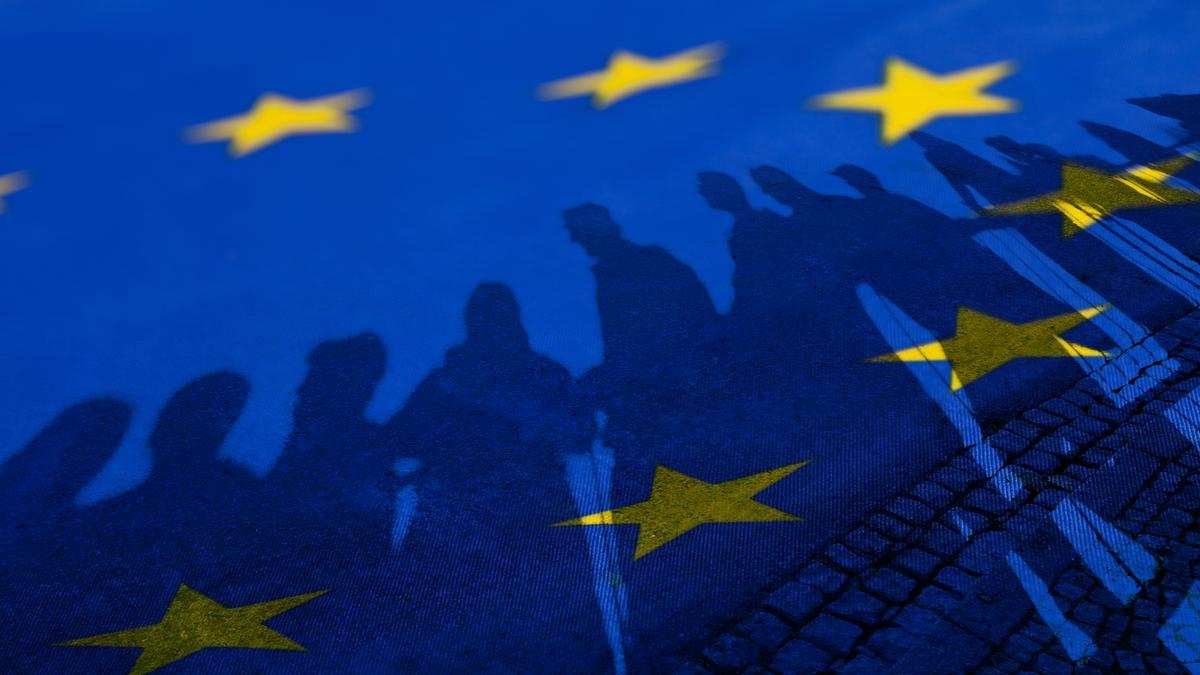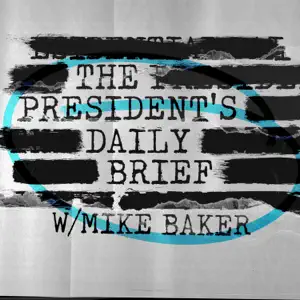
Doom: The Politics of Catastrophe by Niall Ferguson review
(Evening Standard) – From plagues and volcanic eruptions to the current Covid pandemic, mankind has always been faced with catastrophes.
Thought Leader: Niall Ferguson

In the minutes before the deadliest tsunami in India’s memory tore through its southeastern shores on December 26, 2004, people living in those parts were just being themselves — laughing, crying, quarrelling, making love, lamenting or celebrating their destinies.
Seconds before wildfires gutted a huge swathe of Los Angeles’ beautiful landscape earlier this very month, people there were in different states of exhilaration — with the sheer loveliness of their surroundings, the blue of the sky, the reflection of that in the azure of the sea, shopping, discussing the future of their country under Trump and Musk, wringing their hands or raising them in celebration.
‘We could never have imagined…’ is how those affected put it. The calamities were put down to the caprice of nature which cannot be predicted or prevented.
But we can imagine; in fact more than imagine, we can see with the clarity with which the high end scientific team in Los Alamos saw the first detonation of a nuclear weapon, conducted by the United States under the instructions of U.S. President Harry S. Truman at 5:29 a.m. on July 16, 1945, as part of the Manhattan Project. The sight was piercingly sharp. General Thomas Farrell, who was a witness, said in his official report:
“The lighting effects beggared description… It lighted every peak, crevasse and ridge of the nearby mountain range with a clarity and beauty that cannot be described but must be seen to be imagined …. ” If Farrell saw the fury as beauty, the physicist Kenneth Bainbridge who planned and executed the test exclaimed ‘We are all sons of …now’. I leave the elided word to the reader’s imagination.
I‘Perish or use common sense’
This year, 2025, is the 80th year of that test, the world’s first nuclear weapon test. It is also the 80th year of the first use of the bomb that had been tested over the Japanese cities of Hiroshima and Nagasaki less than one month later, killing between 1,50,000 and 2,46,000 people, mostly civilians, leading the Director of the project, J. Robert Oppenheimer, to cite the Bhagavad Gita’s stunning imagery of Death by the light and heat of a thousand suns.
On the very day that the bomb fell on Nagasaki, Bertrand Russell began drafting a statement that said: “The prospect for the human race is sombre beyond all precedent. Mankind are faced with a clearcut alternative: either we shall all perish, or we shall have to acquire some slight degree of common sense. A great deal of new political thinking will be necessary if utter disaster is to be averted.”
The year 2024 was the super election year around the world, and 2025 must be the year when the world’s democracies regroup and find new ways to support each other. Nowhere is this truer than in the relationship between Europe and India, a partnership that, for too long, has been big on strategies, but small on delivery. For nearly 17 years, European Union (EU)India relations were seen through the prism of on/off Free Trade Agreement negotiations. As a free trader, I believe that the benefits of the world’s biggest democracy and its largest trading bloc coming together to buck protectionist headwinds would be an economic and geopolitical game changer.
Look at the bigger picture
However, we cannot be naive to the hurdles ahead. If a big bang trade deal eludes us in the short term, we should develop another track away from the negotiators and bureaucrats. Fixed firmly at the highest political levels, it would focus on bigger picture geostrategic issues such as economic security, defence cooperation and a common agenda for space, emerging technology, and critical industry sectors such as pharmaceuticals.
On the geopolitical level, Europe was undoubtedly frustrated with India’s response to Russia’s invasion of Ukraine and continued close ties. These ties are historic. Conversely, India has broad rivalry with China, despite cooperation through the BRICS group and a substantial trading partnership.
As a growing economy I can understand why India would not want to be sucked into power competition as the world divides into democratic and autocratic blocs. However, fundamentally, India is a democracy and its entanglement with Moscow and Beijing is unnatural. In the same vein, India’s accusations of double standards from Europe are not without is a former Governor
It is high time India did something for peace as there are no Russells, Einsteins and Rotblats to warn the world anymore
served as North Atlantic Treaty Organization (NATO) Secretary General from 200914 and was the Prime Minister of Denmark from 200109
Europe and India need a more practical relationship; together, Europe, India and the United States can be unstoppable
Ten years later, in 1955, Russell and Albert Einstein led nine other scientists to issue an appeal to the leaders of governments to avert nuclear disaster. Joseph Rotblat, the only scientist to have left the Manhattan Project on moral grounds convened a press conference at which the Manifesto was released. The manifesto called for “a conference where scientists would assess the dangers posed to the survival of humanity by weapons of mass destruction”. One particular phrase from the Manifesto has become lore: Remember your humanity, and forget the rest.
This is the 70th year of the Russell Einstein Manifesto, the platinum anniversary of that expression of faith and hope for humanity. But in the intervening years, ‘humanity’ has been forgotten, ‘the rest’ has been pursued relentlessly. Glimmers of hope for humanity have risen through breakthrough arms control agreements and partial test bans, which have brought the world’s arsenal of nuclear weapons down, but the genii keep escaping from the vat of controls.
Today, the danger of a nuclear conflagration is more real than ever. Much more real and immediate than the ‘caprice’ of nature is the finger that can press a nuclear button annihilating all life on planet earth. The fingertip is dangerously close to that little surface and before we can say ‘Stop!’, we may be cinder. Or worse, may be becoming cinder. This is not fantasy. This is not science fiction. And we are all doing exactly what we were when calamity struck us in 2004, and struck California earlier this year. We are in dangerous denial.
The Avadi resolution
This year, 2025, is also the platinum anniversary of another event in India that is scarcely remembered now but was sensationally important at the time. On January 17, 1955 (70 years ago to the date today), the Indian National Congress met in plenary at Avadi, in what was then Madras State, and with Jawaharlal Nehru and C. Rajagopalachari present, passed important resolutions among which was one that anticipated the RussellEinstein Manifesto.
It said: ‘The ominous development in respect of atomic and hydrogen bombs are a menace not only to world peace but to civilisation itself. ..The total prohibition of the manufacture and use of atomic and hydrogen and other weapons of mass destruction as well as conventional atomic weapons such as atomic artillery is imperative if civilisation is to be saved from destruction.’
The Avadi resolution then called for the matter to be taken up by the Disarmament Commission of the United Nations ‘so that the public of all substance. We cannot demand that India severs all ties with Russia without also addressing our own economic dependence on China.
A restart in relations should, therefore, start with a common assessment that Russia and China — with their ‘No Limits’ partnership — are both a threat to the global democratic world which includes India, Europe and the United States. What happens in the Atlantic affects the IndoPacific and vice versa.
On this basis we should focus on a series of practical measures to break down barriers to trade and investment piecemeal while strengthening our joint security, including economic security. This will include reducing dependencies on China in areas such as critical raw materials and developing new supply chains, with Europe seeing India as a ‘Trusted Partner’.
Defence and trade
In defence, India and the U.S. already enjoy strong defence cooperation, with India being America’s ‘Major Defence Partner’ and a member of the ‘Quad’ — sometimes referred to as the ‘AsiaPacific NATO’. Europe should support the continued development of this security alliance to give India more security guarantees.
EUIndia defence discussions have increased but should accelerate to a high political level as Europe looks to bring much needed investment into our industries, which can also offer India better weapons than Russia. The EU’s new dedicated Defence Commissioner should visit India at the earliest opportunity and develop more collaboration, in defence and in space where both the EU and India have ambitious plans.
India and the EU have in place a Trade and Technology Council (TTC) to mirror a similar council with the Biden administration. Whether the EUU.S. TTC survives President Donald nations might become fully aware of the grave menace of war today’.
With Russia having revised its nuclear doctrine and officially declared arms control as ‘a thing of the past’, and North Atlantic Treaty Organization (NATO)made and NATOprovided missiles being sent deep into Russian space, the stage is all but set for Moscow to implement what it has declared to be its option. The IsraelPalestine theatre wobbles on the nuclear tight rope.
These ‘state players’ apart, nonstate entities acquiring access through cyber and Artificial Intelligence pathways to nuclear weapons of the subsidiary type that the Avadi resolution mentioned is not just a possibility but a high probability.
There are no Russells, Einsteins and Rotblats among our science leaders to warn the world and India — now a nuclear weapons state in itself — of what can happen to us. Deterrence is now the esoteric shibboleth of specialists who have made of negotiations for arms control and test bans a selfperpetuating ritual. The world may well negotiate itself to an upstart annihilation or a carefully designed Armageddon ignited by delusions of avenging grandeur.
Nine countries are said to be ‘nuclear weapons countries’, India being one of them. And, by a broad reckoning, as of 2024, the world has some 12,100 nuclear warheads. This number is staggering and unbelievable to any sane mind. But let us note that it is lower than the roughly 60,000 weapons that existed during the Cold War. There is reason to not lose hope.
There may well have been scientific inputs that went into the Avadi resolution, but the propulsion came from the leadership of the day. More recently, Rajiv Gandhi’s ‘Action Plan for a Nuclear Weapons Free and NonViolent World Order of 1998, showed that India ‘remembered humanity’ in the Russellian and Nehruvian way as of 27 years ago. Mani Shankar Aiyar’s book
(just out), A Maverick in Politics, vivifies that initiative and the cause of humanity as few books have in recent times.
India must lead
It is high time India did something for peace, beyond what it has to impress upon Moscow and Kiev the importance of negotiation. As the Avadi resolution put it, the issue is not just about the need to halt belligerence but the need to save humanity. That ‘something’ has to be at the very least a conference on preventing mass annihilation, leading to a new Action Plan, which includes action by India as well. This year of great anniversaries of peace initiatives can, given a stunning new initiative, save the world from inviting Bainbridge’s self-mocking lament.
Trump is unclear, but the EUIndia Council has not reached its potential, especially in coordinating a technology agenda. Here, we can also draw inspiration from India’s ties with the U.S., where the U.S.India initiative on Critical and Emerging Technology (iCET); iCET is promoting collaboration at the National Security Adviser level.
The Australian Strategic Policy Institute illustrates the scale of the challenge. It tracks the top 64 emerging technologies. In 57 of them, China is winning the global race. The U.S. is hot on its heels. However, India is also emerging as a key centre of global research innovation, with many other European countries also still in the running. Individually, we are doing okay in this existential race, but by combining forces, the free world can jump ahead to lead the world in all emerging technology, from quantum computing to advanced biotech. We must not hand victory to China.
In perspective
Europe and India should focus on a far more practical relationship built on tangible connections, including stronger people to people ties. For Europe, the benefits are obvious: India will become the world’s third largest economy in the next decade, at a time when European global GDP share continues to fall. But there is a wider prize: forming an alliance of democracies that has India at its core.
If Europe wants to anchor India in that alliance, we need to change our approach to the subcontinent. That does not mean brushing differences or difficulties under the table. India has many challenges to its democracy, but so does Europe. We should seek to address them together. Europe, India and the United States are individually powerful, but, together, we are unstoppable against the united autocrats.
Doom: The Politics of Catastrophe by Niall Ferguson review
(Evening Standard) – From plagues and volcanic eruptions to the current Covid pandemic, mankind has always been faced with catastrophes.
Thought Leader: Niall Ferguson
Michael Baker: Ukraine’s Faltering Front, Polish Sabotage Foiled, & Trump vs. Kamala
In this episode of The President’s Daily Brief with Mike Baker: We examine Russia’s ongoing push in eastern Ukraine. While Ukrainian forces continue their offensive…
Thought Leader: Mike Baker
Peter Zeihan: What Does the Future Hold for Taiwan and Semiconductors?
From Peter Zeihan: Taiwan has positioned itself as the dominant player in the semiconductor industry, but what would happen if a conflict with China broke…
Thought Leader: Peter Zeihan

